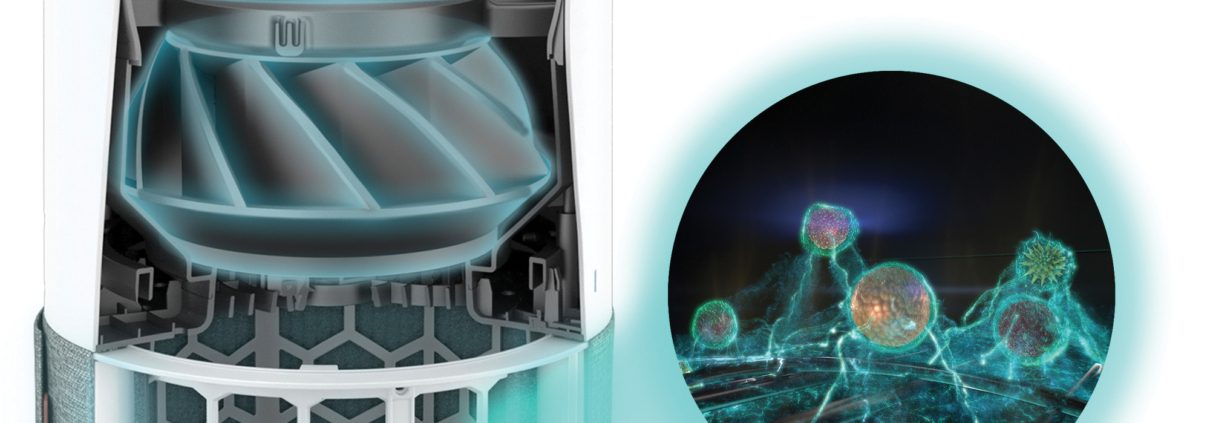What Are Atmospheric Pollutants and Its Impact on Health
An atmospheric pollutant is an airborne particle or chemical that has the potential to be hazardous to human health.
In this post we’ll discuss some of the most common types of atmospheric pollutants, and their causes. We’ll also explore how you can manage the risks of atmospheric pollutants in your workplace.
What Are Natural Atmospheric Pollutants?
Some atmospheric pollutants are created by natural processes – such as plants and the sea. These natural atmospheric pollutants can contribute to, or worsen, existing allergies and lung conditions. They can also pose certain environmental risks, such as contributing to weathering, erosion, and smog formation.
Examples include:
- Ocean spray, which can contain dissolved salt and CO2.
- Volcanoes, which can create particulate matter, along with a number of potentially harmful gases.
- Pollen, which is naturally released by trees, plants, and grasses.
What Atmospheric Pollutants Are Caused By Human Activity?
The majority of atmospheric pollutants form as a result of human activity, including:
- Road traffic emissions.
- Burning fossil fuels (wood and coal) and other energy generation processes.
- Industrial processes.
- Manufacturing processes.
- Agricultural processes.
Below we’ll discuss some of the major atmospheric pollutants caused by human activity, in turn.
What is Particulate Matter?
Particulate matter (PM) is a hazardous air pollutant composed of small particles that are invisible to the naked eye.
Examples of particulate matter include:
- PM1 – In which the particles have a diameter of 1 micrometre or smaller. Examples include smoke, bacteria, and pollen.
- 5 – In which the particles have a diameter of 2.5 micrometres or smaller. Examples include dust and pet dander. You can read our full guide to PM2.5.
- PM10 – In which the particles have a diameter of 10 micrometres or smaller. Examples include the fumes from traffic and industrial processes. You can read our full guide to PM10.
Short and Long Term Exposure to Particulate Matter
Short-term exposure to particulate matter can aggravate existing conditions, including asthma, allergies, and other respiratory conditions. Long-term exposure to PM10 air pollution can lead to serious – even terminal – respiratory conditions, including lung cancer.
What are Nitrogen Oxides (NO and NO2)?
Nitrogen oxides are chemical compounds that are mainly formed by the combustion of fossil fuels, and during certain industrial processes.
Short and Long Term Exposure to Particulate Matter
Short-term exposure to NO2 can cause inflammation of the airways. This can increase an individual’s susceptibility to respiratory infections and allergens. Long-term exposure to NO2 can cause edema, a build-up of fluid in the lungs, leading to bronchitis or pneumonia. As a result, exposure to large amounts of NO2 can be fatal.
NO2 can also react with oxygen in the atmosphere to form ozone. Ozone gas can trigger asthma attacks and respiratory conditions, and can cause inflammation of the eyes, nose, and throat.
You can read our full guide to nitrous oxides, and the hazards they cause.
What Are Volatile Organic Compounds (VOCs)?
The term VOC can refer to thousands of atmospheric pollutants, many of which are colourless and odourless. Though some VOCs are created by biological processes, most are created by human activity. They’re usually created as a by-product of processes including burning fuels, smoking cigarettes, or using paints, cosmetics, cleaning products, and machinery.
Short and Long Term Exposure to VOCs
Short-term exposure to VOCs can cause headaches, fatigue, nausea, and irritation of the eyes, nose, and throat. VOCs can also exacerbate existing allergies, asthma, and other respiratory conditions. Long-term exposure to VOCs can contribute to organ damage and may even cause some cancers.
You can read our full guide to VOCs.
“Toxic Air at the Door of the NHS”
“Toxic Air at the Door of the NHS” was a recent report that found that over 2,000 UK health centres are located in areas with dangerously high levels of atmospheric pollutants, particularly particulate matter. This includes 248 hospitals, which accounts for around 25% of all hospitals in the UK.
Is your hospital or healthcare setting located in an area with toxic air? Take a look at our guide to the best and worst areas in the UK for air pollution to find out.
In any case, there are a few active steps you can take to improve the air quality for your staff, patients, and other visitors:
- Implement strict onsite speed limits, which could make a dramatic difference to your local air pollution levels.
- Discourage or ban smoking inside and outside.
- Start air quality monitoring schemes wherever your most vulnerable patients congregate (such as in waiting rooms and wards), and wherever your staff might be exposed to hazardous chemicals.
- Use high quality air filtration systems to remove air pollutants quickly and effectively from your hospital’s atmosphere.
Quick, Effective and Unobtrusive Hospital-Grade Air Purifiers From Cairn Technology
Our Blueair HealthProtect™ air purifiers are fitted with advanced HEPASilent™ technology. This is capable of catching 99.97% of particles down to 0.1 microns, which includes many of the most common atmospheric pollutants, such as VOCs, nitrous oxides, and particulate matter. They can also capture and kill 99% of viruses and bacteria.
Take a look at our specialist air purification systems for hospitals.



